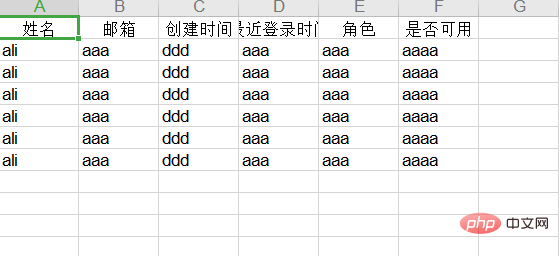

La méthode de mise en œuvre est la suivante :
(Recommandation du didacticiel vidéo : cours Java)
1. nouveau projet SpringBoot
2. Importer les dépendances –pom.xml
<?xml version="1.0" encoding="UTF-8"?>
<project xmlns="http://maven.apache.org/POM/4.0.0" xmlns:xsi="http://www.w3.org/2001/XMLSchema-instance"
xsi:schemaLocation="http://maven.apache.org/POM/4.0.0 https://maven.apache.org/xsd/maven-4.0.0.xsd">
<modelVersion>4.0.0</modelVersion>
<parent>
<groupId>org.springframework.boot</groupId>
<artifactId>spring-boot-starter-parent</artifactId>
<version>2.2.6.RELEASE</version>
<relativePath/> <!-- lookup parent from repository -->
</parent>
<groupId>com.briup</groupId>
<artifactId>demo3</artifactId>
<version>0.0.1-SNAPSHOT</version>
<packaging>war</packaging>
<name>demo3</name>
<description>Demo project for Spring Boot</description>
<properties>
<java.version>1.8</java.version>
</properties>
<dependencies>
<dependency>
<groupId>org.springframework.boot</groupId>
<artifactId>spring-boot-starter-web</artifactId>
</dependency>
<dependency>
<groupId>org.springframework.boot</groupId>
<artifactId>spring-boot-starter-tomcat</artifactId>
<scope>provided</scope>
</dependency>
<dependency>
<groupId>org.springframework.boot</groupId>
<artifactId>spring-boot-starter-test</artifactId>
<scope>test</scope>
<exclusions>
<exclusion>
<groupId>org.junit.vintage</groupId>
<artifactId>junit-vintage-engine</artifactId>
</exclusion>
</exclusions>
</dependency>
<dependency>
<groupId>org.apache.poi</groupId>
<artifactId>poi</artifactId>
<version>3.6</version>
<exclusions>
<exclusion>
<groupId>javax.servlet</groupId>
<artifactId>servlet-api</artifactId>
</exclusion>
<exclusion>
<groupId>log4j</groupId>
<artifactId>log4j</artifactId>
</exclusion>
</exclusions>
</dependency>
</dependencies>
<build>
<plugins>
<plugin>
<groupId>org.springframework.boot</groupId>
<artifactId>spring-boot-maven-plugin</artifactId>
</plugin>
</plugins>
</build>
</project>3 Créer diverses classes
Créer de nouvelles classes d'entité
N'oubliez pas d'ajouter get/. définir des méthodes
public class User {
private String username;
private String email;
private String createTime;
private String LastLoginTime;
private String roleName;
private String enable;
public User() {
super();
}
}Créer une nouvelle interface de service
import java.util.List;
public interface UserService {
public List<User> findAllUser();
}Créer un nouvel Impl qui implémente l'interface de service
import java.util.List;
public class UserServiceImpl implements UserService {
@Override
public List<User> findAllUser() {
User user = new User();
return null;
}
}Créer une nouvelle classe d'outils ExcelUtil
import java.util.List;
import java.util.Map;
import org.apache.poi.hssf.usermodel.HSSFCell;
import org.apache.poi.hssf.usermodel.HSSFCellStyle;
import org.apache.poi.hssf.usermodel.HSSFRow;
import org.apache.poi.hssf.usermodel.HSSFSheet;
import org.apache.poi.hssf.usermodel.HSSFWorkbook;
public class ExcelUtil {
public static HSSFWorkbook getHSSFWorkbook(String sheetName,String sheetName1,String sheetName2, String []title, String[] content,String[] app){
// 第一步,创建一个HSSFWorkbook,对应一个Excel文件
HSSFWorkbook wb = new HSSFWorkbook();
// 第二步,在workbook中添加一个sheet,对应Excel文件中的sheet
HSSFSheet sheet = wb.createSheet(sheetName);
HSSFSheet sheet1 = wb.createSheet(sheetName1);
HSSFSheet sheet2 = wb.createSheet(sheetName2);
// 第三步,在sheet中添加表头第0行,注意老版本poi对Excel的行数列数有限制
HSSFRow row = sheet.createRow(0);
HSSFRow row1 = sheet1.createRow(0);
HSSFRow row2 = sheet2.createRow(0);
// 第四步,创建单元格样式,并设置值表头 设置表头居中
HSSFCellStyle style = wb.createCellStyle();
style.setAlignment(HSSFCellStyle.ALIGN_CENTER); // 创建一个居中格式
//声明单元格
HSSFCell cell = null;
//创建标题
for(int i=0;i<title.length;i++){
//创建一个单元格
cell = row.createCell(i);
//给单元格赋值
cell.setCellValue(title[i]);
//给单元格设置样式
cell.setCellStyle(style);
}
//创建标题
for(int i=0;i<title.length;i++){
//创建一个单元格
cell = row1.createCell(i);
//给单元格赋值
cell.setCellValue(title[i]);
//给单元格设置样式
cell.setCellStyle(style);
}
//创建内容
if (content != null && content.length > 0){
for(int i=0;i<content.length;i++){
row = sheet.createRow(i + 1);
for(int j=0;j<content.length;j++){
//将内容按顺序赋给对应的列对象
row.createCell(j).setCellValue(content[j]);
}
}
}
if (content != null && content.length > 0){
for(int i=0;i<content.length;i++){
row1 = sheet1.createRow(i + 1);
for(int j=0;j<content.length;j++){
//将内容按顺序赋给对应的列对象
row1.createCell(j).setCellValue(content[j]);
}
}
}
if (app != null && app.length > 0){
for(int i=0;i<app.length;i++){
row2 = sheet2.createRow(i + 1);
for(int j=0;j<app.length;j++){
//将内容按顺序赋给对应的列对象
row2.createCell(j).setCellValue(app[j]);
}
}
}
return wb;
}
}Créez une nouvelle classe Controller
import java.io.OutputStream;
import java.text.SimpleDateFormat;
import java.util.ArrayList;
import java.util.List;
import javax.servlet.http.HttpServletResponse;
import org.apache.poi.hssf.usermodel.HSSFWorkbook;
import org.springframework.util.StringUtils;
import org.springframework.web.bind.annotation.RequestBody;
import org.springframework.web.bind.annotation.RequestMapping;
import org.springframework.web.bind.annotation.ResponseBody;
import org.springframework.web.bind.annotation.RestController;
@RestController
@RequestMapping("/MyTest")
public class HelloController {
@ResponseBody
@RequestMapping("/hello")
public void export(@RequestBody(required = false) User user,String username,HttpServletResponse response) throws Exception {
if (user ==null && !StringUtils.isEmpty(username)){
//GET 请求的参数
user = new User();
user.setUsername(username);
}
UserService userService = new UserServiceImpl();
//获取数据
List<User> list = userService.findAllUser();
//excel标题
String[] title = {"姓名", "邮箱", "创建时间", "最近登录时间","角色","是否可用"};
//excel文件名
String fileName = System.currentTimeMillis() + ".xls";
//sheet名
String sheetName = "用户信息";
String sheetName1 = "hello";
String sheetName2 = "xixi";
//没有数据就传入null吧,Excel工具类有对null判断
String[] content= {"ali","aaa","ddd","aaa","aaa","aaaa"};
String[] app= {"bbbb","bbbb","bbbb","bbbb","bbbb","bbbb",};
if (list != null && list.size() > 0){
SimpleDateFormat sdf = new SimpleDateFormat("yyyy-MM-dd");
for (int i = 0; i < list.size(); i++) {
User obj = list.get(i);
content[1] = obj.getUsername();
content[1] = obj.getEmail();
content[2] = obj.getCreateTime() == null ? "" : sdf.format(obj.getCreateTime());
content[3] = obj.getLastLoginTime() == null ? "": sdf.format(obj.getLastLoginTime());
content[4] = obj.getRoleName();
}
}
if (list != null && list.size() > 0){
SimpleDateFormat sdf = new SimpleDateFormat("yyyy-MM-dd");
for (int i = 0; i < list.size(); i++) {
User obj = list.get(i);
app[1] = obj.getUsername();
app[1] = obj.getEmail();
app[2] = obj.getCreateTime() == null ? "" : sdf.format(obj.getCreateTime());
app[3] = obj.getLastLoginTime() == null ? "": sdf.format(obj.getLastLoginTime());
app[4] = obj.getRoleName();
}
}
//创建HSSFWorkbook
HSSFWorkbook wb = ExcelUtil.getHSSFWorkbook(sheetName,sheetName1,sheetName2, title, content,app);
// HSSFWorkbook wb1 = ExcelUtil.getHSSFWorkbook(sheetName1, title, content);
//响应到客户端
try {
fileName = new String(fileName.getBytes(), "UTF-8");
response.setContentType("application/vnd.ms-excel;charset=utf-8");
response.setHeader("Content-Disposition", "attachment; filename=" + fileName);
OutputStream os = response.getOutputStream();
wb.write(os);
os.flush();
os.close();
} catch (Exception e) {
e.printStackTrace();
}
}
}Définissez l'application .properties
server.port=8081
La chose la plus importante à noter est la suivante : la classe Application doit être dans le package le plus externe ! ! !
4. Dernière visite
localhost:8081/MyTest/hello
Résultat :

Aucun front-end écrit , Vous pouvez écrire un code HTML, définir une balise a et cliquer sur un événement.
Recommandations associées : Démarrez avec Java
Ce qui précède est le contenu détaillé de. pour plus d'informations, suivez d'autres articles connexes sur le site Web de PHP en chinois!